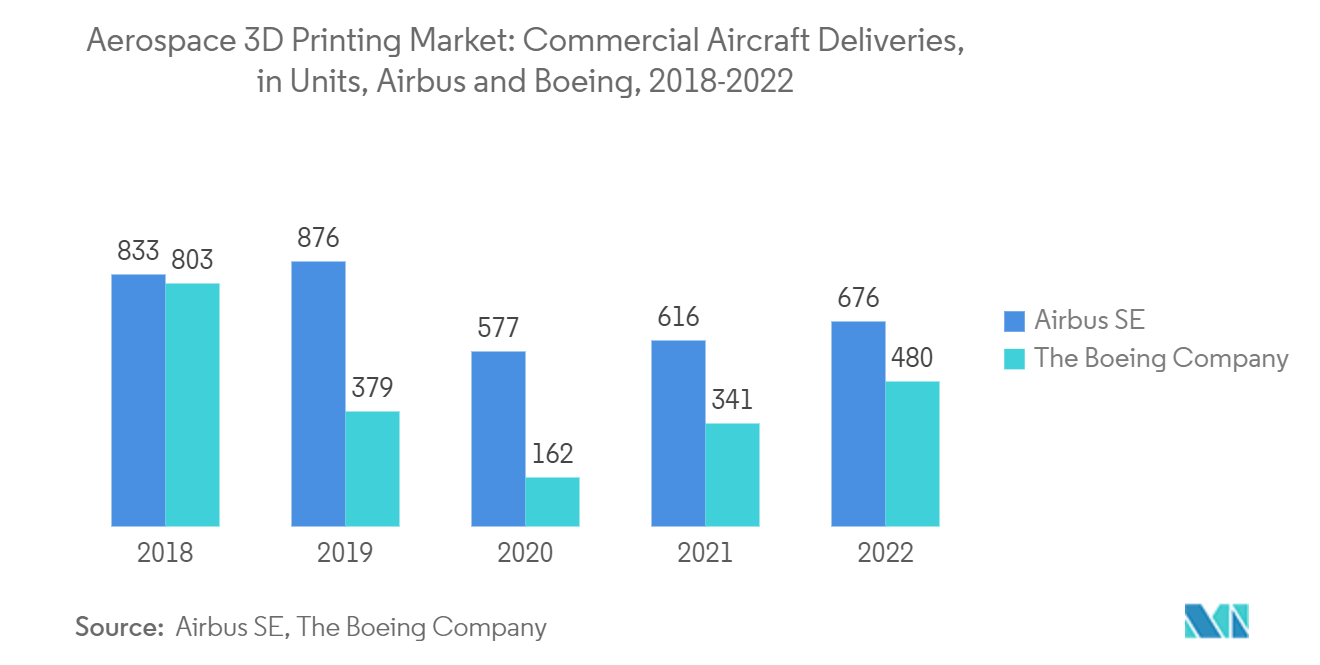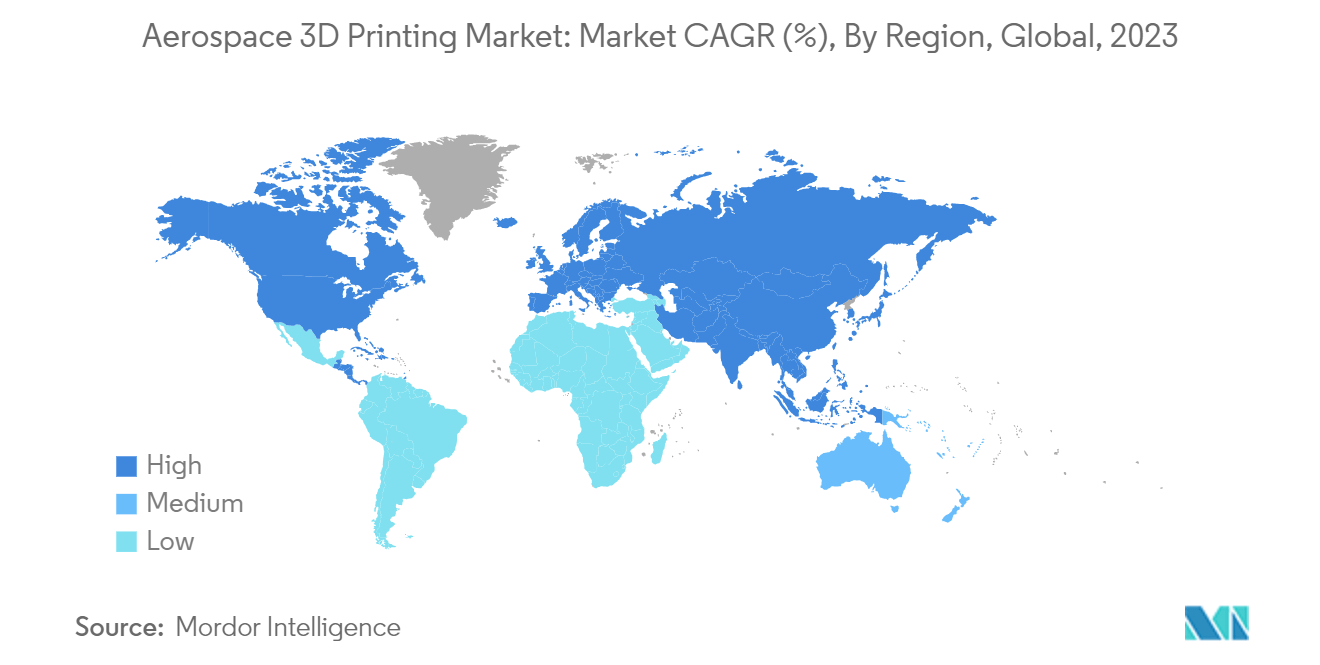Market Trends of 3D Printing In Aerospace And Defense Industry
Aircraft Segment is Expected to Show Highest Growth During the Forecast Period
The aircraft segment will showcase remarkable growth during the forecast period. The growth would be due to the increasing number of commercial aircraft orders and deliveries, as well as the rising adoption of advanced technologies in aircraft manufacturing.
3D printing has revolutionized the aircraft manufacturing industry, and there is a massive expansion in the number of use cases where additive manufacturing can replace conventional methods of manufacturing commercial and military aircraft parts at lower costs, faster lead times, and more digitally flexible design and development methods. The B777X aircraft is a prominent example of the application of additive manufacturing as its GE9X engines are made of 300 3D printed parts, including fuel nozzles, temperature sensors, heat exchanges, and low-pressure turbine blades.
Aircraft OEMs and 3D printing firms are collaborating to significantly reduce inventory costs and storage requirements instead of maintaining large stocks of spare parts. Manufacturers can produce them as needed, reducing lead times and supply chain complexities. For instance, in January 2023, Leonardo signed a five-year deal with BEAMIT Group, an Italian premier service bureau for high-end 3D printing applications, to develop and qualify parts for installation onboard Leonardo aircraft models. Since 2017, the two firms have collaborated to qualify and install over 100 parts onboard the M345, M346, and C27J aircraft models. Such developments are expected to drive the market growth in coming years.

Asia-Pacific is Expected to Project Significant Growth in the Market During the Forecast Period
Asia-Pacific is anticipated to show remarkable growth in 3D printing in the aerospace and defense market during the forecast period. The growth is expected to be due to the rapid expansion of the aviation sector and increasing defense expenditure from countries such as China, India, and South Korea. According to the International Air Transport Association (IATA), China became the largest aviation market in terms of seating capacity in mid-2020. According to plans released in February 2021, China is planning to have 400 civilian transport airports by the end of 2035.
Under the country's Made in China 2025 master plan, the Chinese government has earmarked the development of aerospace equipment and 3D printing as key growth drivers of Chinese manufacturing industries. A Chinese manufacturer developed the C919 narrow-body aircraft using 3D printed titanium parts, 28 cabin door parts, and two fan inlet structural parts to reduce the airliner's weight and increase its safety. Also, China's aviation industry has started using 3D printing technologies on new-generation warplanes, with 3D printed parts widely used on newly developed aircraft. 3D printing technologies have been implemented in the major aircraft manufacturing factories of the Chinese aviation industry. 3D printed parts provide numerous advantages such as high structural strength and long service life, as well as being lightweight, low cost, and quicker to manufacture.
Furthermore, India is gradually growing concerning its utilization of 3D printing technology, with startups springing up in cities like Bangalore, Chennai, Mumbai, Visakhapatnam, etc., to produce essential parts for the aerospace and defense sector. The clientele includes the Indian Navy, Air Force, Indian Space Research Organization (ISRO), and Hindustan Aeronautics Limited (HAL). For instance, in November 2022, the Indian Army constructed 3D printed bunkers or permanent defenses along the Line of Actual Control in eastern Ladakh. Military Engineering Services (MES) and start-ups have developed 3D printed structures of varying sizes and capabilities. The MES is planning to deploy permanent 3D printed shelters, such as bunkers and houses, from the beginning of 2023 along the Line of Actual Control and International Border, from Sikkim, Ladakh, and Arunachal Pradesh to desert regions. Thus, growing adoption of 3D printing in aerospace and defense boosts the market growth across the region.

